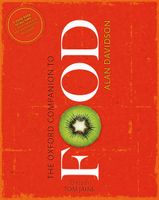Advertisement
Persimmon
Published 2014
The name persimmon comes from ‘putchamin’, a phonetic rendering of the name used by the American Indians of the Algonquin tribe. They ate them when they were ripe and had fallen from the tree and dried them to be eaten in the winter. The first European to write about the fruit was probably the Spanish explorer Don Fernando de Soto, who learned about it from the Indians of Florida in 1539. Captain John Smith, in the 17th century, likened it to the medlar, noting: ‘if it be not ripe it will drawe a mans mouth awrie with much torment; but when it is ripe, it is as delicious as an Apricock.’ Ripe persimmons were eaten by the settlers, or used in puddings, breads, preserves, etc. But the production of persimmon (or ‘simmon’) beer and wine and other alcoholic drinks was an equally important use.


